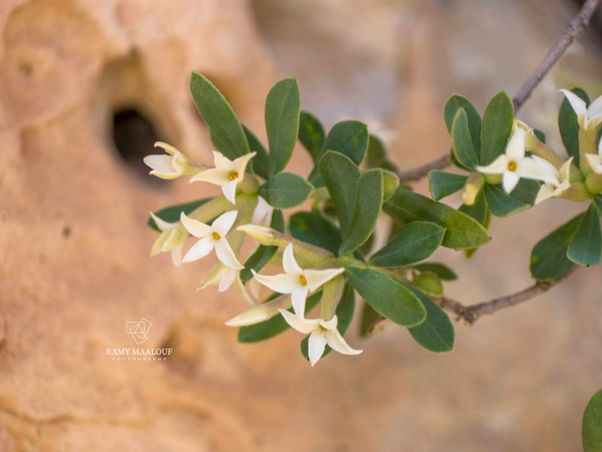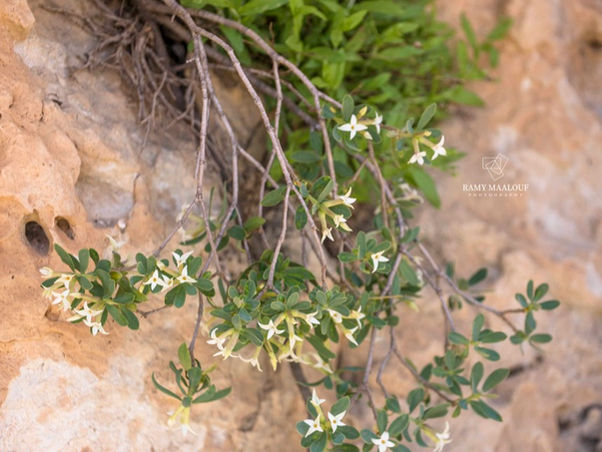Family |
Thymelaeaceae
Daphne oleoides
Schreb.
Daphne oleoides Schreb.
(Icon. Descr. Pl.: 13; 1766 – Nouvelle Flore du Liban et de la Syrie, vol. 2, Pl. CLVII nº 3; 1969)
• Life-form & habit: Evergreen shrub, 20–70 cm tall, forming dense, low mats or hemispherical cushions. Branches woody, rigid, much-branched from the base, often gnarled and divaricate. Young shoots green, finely pubescent or glabrescent.
• Leaves: Alternate, crowded near branch tips, sessile, oblong to lanceolate, 10–25 × 3–8 mm, entire, coriaceous, with revolute margins. Upper surface dark green and glossy; underside paler, sometimes slightly tomentose.
• Inflorescence & flowers: Terminal or subterminal clusters of 3–8 sessile, tubular flowers. Calyx (perianth) tubular, 7–12 mm long, white to creamy-yellow or pinkish; lobes 4, spreading, ovate, obtuse. Flowers fragrant, bisexual. Stamens 8 in two whorls; style short; stigma capitate.
• Fruit: Drupe ovoid, 7–10 mm long, red to orange-red when ripe, containing a single seed.
• Phenology: Flowers from March to May; fruits mature in late spring to early summer.
• Habitat & elevation: Dry, rocky limestone slopes, garrigue, and open pine or juniper woodland, 800–2 200 m. Prefers well-drained calcareous soils and sunny exposures, often on steep or eroded ground.
• Lebanese distribution: Common in the Mount Lebanon chain, particularly Barouk, Ehden, Bsharré, and Dahr el-Baïdar; extends into the Beqaa Valley foothills. Often dominant in open montane shrublands and among Juniperus excelsa stands.
• Native to: Albania, Algeria, Bulgaria, Corse, Greece, Italy, Kriti, Lebanon-Syria, NW. Balkan Pen., Sardegna, Sicilia, Spain, Türkiye (POWO).
• ⚠️ Taxonomic note: A widespread Mediterranean–montane species, Daphne oleoides is readily recognised by its small, leathery, glossy leaves and clusters of tubular white to cream flowers borne at the shoot tips. It varies regionally in hairiness and flower colour, with Levantine populations corresponding to subsp. libanotica (Boiss.) Mouterde — characterised by narrower leaves, denser cushions, and shorter floral tubes. In Lebanon, it is a dominant element of dry montane limestone vegetation, forming resilient dwarf shrubs that stabilise steep rocky slopes and add early-season floral colour to the cedar belt.








